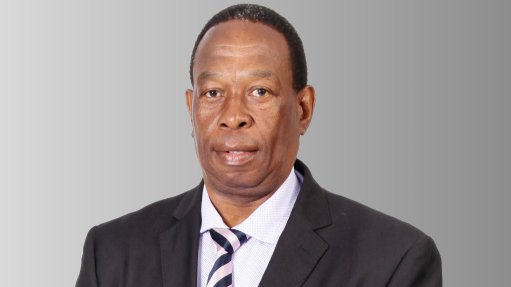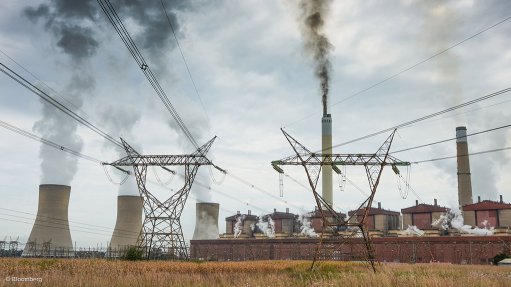Kazungula: crossing into a new trade age
In aimless surfing on Twitter a couple of days ago, up popped a picture of the new Kazungula crossing. The name resonates: Kazungula. One of my earliest memories of the Kazungula was of my family stuck on a rusty pontoon in the middle of the Zambezi river between Zambia and Botswana as bullets flew around us. A ‘border skirmish’ between Zambian and then Rhodesian troops had broken out almost as soon as the pontoon left the riverbank. We lived to tell the tale and had an unspoiled holiday along the Chobe river. The crossing is a critical point where Zambia, Zimbabwe and Namibia’s Caprivi Strip meet on the banks of the Zambezi and was a hotbed of military activity during the Zimbabwean and Namibian wars of independence.
The tweet showed the opening on May 10 of the Kazungula bridge, a magnificent suspension bridge now linking Zambia and Botswana over the Zambezi. The 923-m- long bridge – boasting a single track of railway, two traffic lanes and pedestrian walkways – replaces the two massive floating pontoons travelling in both directions across the Zambezi that historically created massive trade and traffic bottlenecks.
A far cry from those war-torn days, the presence of several Southern African Development Community (SADC) heads of State at the inauguration of the bridge underlines the importance of this sleek new monument to trade efficiency. Financed by the Japan International Cooperation Agency and the African Development Bank (AfDB), the bridge will slash heavy goods transit times from 36 hours to two! It is designed to be a ‘one-stop border post’, which Zambia’s President Edgar Lungu insists will stay open until 22:00 every night. Around 250 trucks a day are expected to use the crossing, which will provide the SADC’s northern-most economies with a fast new export route to the south through Botswana to Namibia’s Walvis Bay port and South Africa’s Durban and Cape Town ports. Moreover, new routes through Zambia will open up the SADC region to Atlantic Ocean countries and Mozambique’s ports of Beira and Nacala as part of the SADC’s broader plan to improve interconnectedness and increase community trade links. The Kazungula bridge extends rail links from Livingstone in Zambia’s Southern Province to Mosetse, in Botswana’s central district.
The big loser in this significant trade event is Zimbabwe. The Kazungula bridge provides the Democratic Republic of Congo (DRC), Malawi, Zambia and northern Mozambique with an alternative to traversing Zimbabwe. The Chirundu–Beitbridge route, the busiest in the SADC region, has become increasingly difficult. Exporters complain that Beitbridge is both badly managed and overburdened, a problem that Covid-19 restrictions have exacerbated, as Zimbabwe and South Africa both imposed coronavirus testing and lockdown measures during 2020 and early this year. South Africa closed all land borders on January 11, allowing only returning residents and commercial cargo to pass through Beitbridge. Normal travel was allowed to resume on February 15. Unprecedented closures resulted in a huge backlog in goods and people crossing and high tensions which, according to one report, led to 15 deaths. With extreme queues and disruption at Beitbridge and other border crossings, a new bridge at Kazungula offers a working contingency plan for export.
When the Botswana and Zambian governments launched the $260-million project in 2007, Zimbabwe’s then leader, Robert Mugabe, objected, claiming that Zambia and Botswana had no land border and so refused to participate. The bridge was then designed to avoid Zimbabwe’s land area altogether. Zimbabwe will see a substantial drop in traffic and trade revenues from Beitbridge of about $45-million a month. President Emmerson Mnangagwa attended the Kazungula Bridge’s opening, insisting that Zimbabwe will add a third leg to join its links. While Zambia and Botswana have agreed to Zimbabwe’s involvement in principle, there are no signs of how Zimbabwe will finance its share of the project.
Alternatives to Zimbabwe and additional import and export routes are crucial to the region’s economies as they seek to recover from Covid-19, more so if SADC countries are to maximise the global surge in demand for Zambia and the DRC’s main export – copper. The bridge’s opening comes at a time when the price of copper has shot up by some 90% over the past year to trade above $10 000/t for the first time in a decade. This month, Glencore CEO Ivan Glasenberg told a Financial Times audience that the mining industry would need to produce an extra one-million tonnes of copper every year to meet mid-century net-zero carbon emissions targets and that prices would have to rise $15 000/t to increase production and exports. Goldman Sachs analysts agree, and have started to call copper the new oil. They say the post-Covid-19 green transition towards electrification will see an immediate surge in copper demand and a resulting structural shortage in supply. This has sparked renewed chatter among commodities reporters of a fresh commodities supercycle similar to that seen through the 1990s. Speedy export routes will increase the attractiveness of new copper projects in what are seen as higher risk/higher cost mining provinces like the DRC and Zambia. Copper accounts for 50% of the DRC exports and 73% of Zambia’s exports. A surge in imports is also expected as exploration and production activities in Zambia’s Copperbelt and the DRC’s southern Kolwezi mining province ramp up.
The other winner – along with Zambia and Botswana – will be Namibia and its Walvis Bay port. Walvis Bay was the destination for cargo from Zambia and the DRC when it was redirected away from Beitbridge and South Africa’s ports after South Africa entered lockdown in April last year. Miners First Quantum, Barrick and CNMC all diverted part of their mining output to Walvis Bay, adding to an 11% increase in cargo handling at Namibian ports last year, despite the pandemic. Another AfDB-funded project to expand the capacity of the Walvis Bay port was completed in September. The certainty that Kazungula presents to exporters, riding on the back of Covid-19 uncertainty, may see this trade shift become a permanent trend.
Article Enquiry
Email Article
Save Article
Feedback
To advertise email advertising@creamermedia.co.za or click here
Comments
Press Office
Announcements
What's On
Subscribe to improve your user experience...
Option 1 (equivalent of R125 a month):
Receive a weekly copy of Creamer Media's Engineering News & Mining Weekly magazine
(print copy for those in South Africa and e-magazine for those outside of South Africa)
Receive daily email newsletters
Access to full search results
Access archive of magazine back copies
Access to Projects in Progress
Access to ONE Research Report of your choice in PDF format
Option 2 (equivalent of R375 a month):
All benefits from Option 1
PLUS
Access to Creamer Media's Research Channel Africa for ALL Research Reports, in PDF format, on various industrial and mining sectors
including Electricity; Water; Energy Transition; Hydrogen; Roads, Rail and Ports; Coal; Gold; Platinum; Battery Metals; etc.
Already a subscriber?
Forgotten your password?
Receive weekly copy of Creamer Media's Engineering News & Mining Weekly magazine (print copy for those in South Africa and e-magazine for those outside of South Africa)
➕
Recieve daily email newsletters
➕
Access to full search results
➕
Access archive of magazine back copies
➕
Access to Projects in Progress
➕
Access to ONE Research Report of your choice in PDF format
RESEARCH CHANNEL AFRICA
R4500 (equivalent of R375 a month)
SUBSCRIBEAll benefits from Option 1
➕
Access to Creamer Media's Research Channel Africa for ALL Research Reports on various industrial and mining sectors, in PDF format, including on:
Electricity
➕
Water
➕
Energy Transition
➕
Hydrogen
➕
Roads, Rail and Ports
➕
Coal
➕
Gold
➕
Platinum
➕
Battery Metals
➕
etc.
Receive all benefits from Option 1 or Option 2 delivered to numerous people at your company
➕
Multiple User names and Passwords for simultaneous log-ins
➕
Intranet integration access to all in your organisation
















